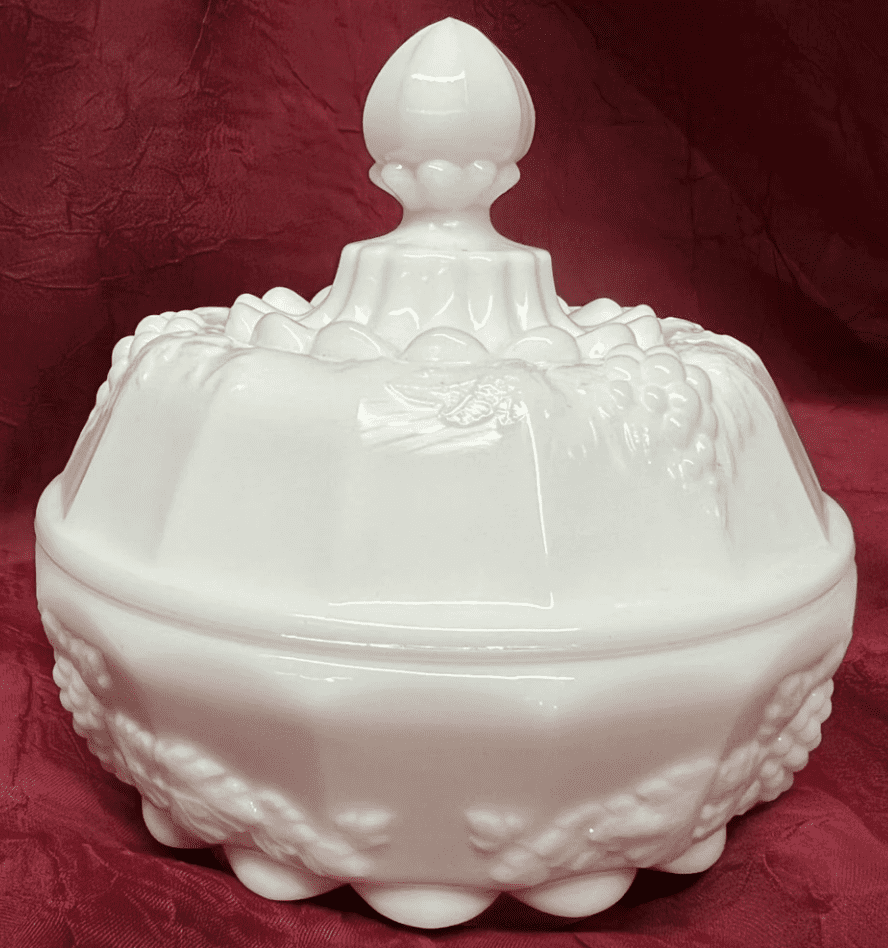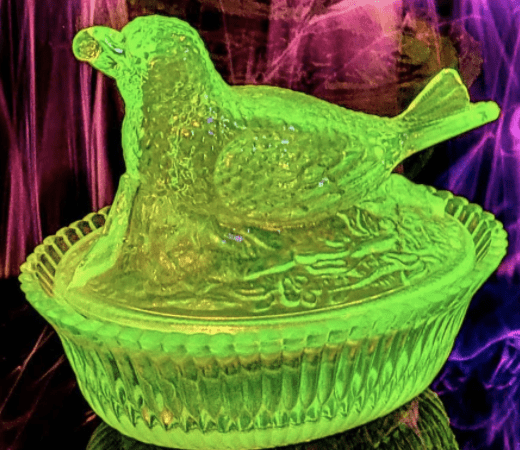Westmoreland glass is a coveted brand of high-quality glass in the world of antique glass collections. You might already own Westmoreland pieces, or maybe you are wanting to acquire pieces from this brand. In either case, here you will find all you need to know about Westmoreland glass.
The Westmoreland Glass Company was founded in 1889 in Grapeville, Pennsylvania. The company is known mainly for its production of high-quality milk glass, which was especially popular between 1920-1950, but is also known for its high-quality decorated glass. The company went out of business in 1984.
Before its eventual closure, Westmoreland glass was one of the leading glass companies in the United States. Keep reading to find out the history behind this company of nearly a century and how it successfully made a name for itself!

The Story Behind the Company
The Westmoreland Glass Company started as the Specialty Glass Company of East Liverpool, Ohio. The company was relocated to Grapeville, Pennsylvania in 1889 to take advantage of the abundant supply of natural gas in the area. The company was overseen by brothers George and Charles West.
By 1890, the production of items such as pitchers, goblets, tumblers, and other glass novelty items was in full swing. With the backing of Ira Brainard from Pittsburgh, the brothers bought out the Ohio founders and changed the company’s name to the Westmoreland Specialty Company. The operation of the factory ran smoothly under the direction of both brothers for nearly 30 years. During this period, Westmoreland produced virtually every type of glassware, from inexpensive pressed glass to pricier cut glass.

Disagreements between the West brothers eventually led to George leaving the company, which Charles then ran on his own. Around the same time George left, the name was changed to Westmoreland Glass Company to eliminate any confusion in the eyes of the consumer about what a “specialty” company might produce. The change from “specialty” to “glass” made the company’s mission clear to all.
Due to their good reputation and high level of craftsmanship, Westmoreland milk glass pieces were considered some of the finest examples of the material in the United States. This reputation for quality is a major reason why the factory was not forced to close during the Great Depression, an unfortunate fate that many of Westmoreland’s competitors were not able to escape.
Near the end of the decade of the 1950s, the popularity of milk glass decreased and Westmoreland struggled through the 1970s. By the 1980s, the company needed a new owner in order to stay afloat. David Grossman purchased Westmoreland in 1981, but despite his efforts to revive the business, the same level of interest in the milk glass pieces that Westmoreland specialized in was no longer there. On January 8, 1984, almost 100 years after its founding, the factory shut down production.
Since the company’s closing, interest in Westmoreland glass has grown among antique glass collectors and is fairly popular among collectors.
What is Westmoreland Glass?
As we’ve established, Westmoreland glass was known and respected for its quality. Despite producing various types of glass, milk glass was Westmoreland’s specialty. In the 1920s, Charles West added a decorating department to the factory, which allowed for the distribution of crystal and decorated ware, but it was milk glass that kept the company profitable and in the black. In fact, from the 1920s to the 1950s, an estimated 90 percent of the company’s production was milk glass.
What is Milk Glass?
Milk glass is an opaque or translucent, milk-white or colored glass that can be blown or pressed into a wide variety of shapes. Milk glass can be difficult to spot to the untrained eye. A real milk glass should be slightly translucent, meaning that light should shine through the glass. An antique milk glass will have an iridescent rainbow on the rim of the glass, but to be absolutely sure, you can have the glass examined by an antique expert.

What is Uranium Glass?
Although most known for its milk glass, Westmoreland also produced uranium glass in its early days, around 1920-1940. Uranium is a greenish, yellow glass made with uranium. The most reliable way to identify the presence of uranium in glass is to expose it in the dark to a black light. If the glass glows a rich green color, it contains uranium.

Identifying Westmoreland Glass
The Westmoreland Glass Company’s identifying marks have evolved over the years but was known to use primarily two marks on their products. From 1910 to 1929, a “W” within a keystone was used to indicate an authentic Westmoreland piece.
In the late 1940s, a stacked “W” and “G” for “Westmoreland Glass” were used. This mark is the more commonly known one by collectors and dealers. Around 1982, after David Grossman bought the factory, the mark was again changed. The initials were abandoned altogether in place of a circled “Westmoreland” around 3 lines.
Various insignia styles came and went between these main phases of identifying marks, although the insignias are difficult to pinpoint to just one time, as they were used too infrequently to date a particular piece with any certainty.
Some Westmoreland pieces today are completely unmarked, due to later production runs of glass pieces that were sometimes labeled with just a paper sticker. These stickers have been removed either purposefully or just with time in nearly every case and can make identification difficult.

If you are especially interested in Westmoreland glass, it might be worth investing in a guidebook about Westmoreland glass. These guidebooks are available for purchase and can help collectors identify unmarked pieces. When in doubt, there is also always the option to take a piece of suspected Westmoreland glass to an antique expert for confirmation.
Is Westmoreland Glass Valuable?
At this point you might be wondering about the value of Westmoreland glass today. Depending on the piece, Westmoreland glass can sell for anywhere from $25 to a couple of hundred dollars for a matching set. Milk glass in general is valuable and sought out among collectors today, so Westmoreland pieces are plenty relevant among antique collectors.
The value of Westmoreland glass also varies greatly depending on the pattern of the glass. One of the most popular and expensive designs from Westmoreland is the Old Quilt pattern. These came in different glass types including carnival, slag, plain milk glass, and embellished milk glass with colored accents.

This pattern came in dresser sets, tumblers, plates, vases, punch bowls, tea sets, and many other household items. Despite the huge range in pieces, Old Quilt items are still some of the most desirable pieces today. Matching sets almost always increase the value and selling price–one pitcher and tumbler set in Old Quilt recently sold for $110, but have been priced as high as $300.

